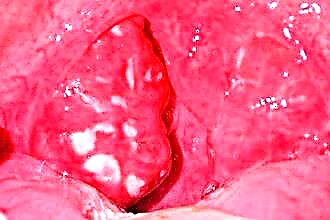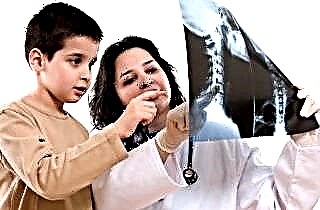The itching sensation is one of the most unpleasant experiences, especially when it is impossible to mechanically influence the area that is its source. Although itching is not painful, it causes significant discomfort to patients, and if it occurs frequently and persists for a long time, it can be the cause of the development of nervous disorders. When the throat itches and there is a strong urge to cough, you need to think about why this is happening. It is necessary to pay attention to all accompanying symptoms, as well as the time of the onset of itching and its probable connection with provocative factors. It is not worth starting treatment until the exact cause is clarified, as this can lead to a distortion of the clinical picture and complicate the diagnosis.
Probable pathologies
Cough and itching are symptoms that can be present individually or in combination with many diseases. They are not specific to any age group and are found in both children and adults. In this case, they can be characterized in different ways, depending on the characteristics (sputum production, localization of itching), accompanying signs.
Why does it itch in the throat and want to cough? These symptoms are most likely due to:
- sensory dysfunction of the larynx;
- respiratory allergies.
 Sensory dysfunction of the larynx involves a violation of the sensitivity of the mucous membrane and a change in reaction to various, even habitual stimuli (air, perfume, etc.).
Sensory dysfunction of the larynx involves a violation of the sensitivity of the mucous membrane and a change in reaction to various, even habitual stimuli (air, perfume, etc.).
Respiratory allergies is a collective term that unites lesions of the respiratory (respiratory) system of an allergic nature. The pathological process in respiratory allergy involves the paranasal sinuses, pharynx, larynx, trachea, bronchi, and lungs. Symptoms are triggered by contact with a variety of allergens, which are:
- food products;
- cosmetical tools;
- animal hair;
- house dust;
- pollen of plants, etc.
The most common route of entry of an allergen into the body in case of respiratory allergies is inhalation.
This means that the patient comes into contact with the substance provocateur, inhaling it. Symptoms in this case usually develop acutely and appear within a few minutes after the allergen enters the mucous membrane of the respiratory tract. Allergic lesions of the upper respiratory system are usually classified as minor forms of respiratory allergies. If the throat itches and a cough occurs, an allergic pathology can be assumed:
- Nose (rhinitis).
- Pharynx (pharyngitis).
- Larynx (laryngitis).
Often there is a simultaneous combination of manifestations of all forms named in the list. Sometimes there are isolated options, as well as options that complement the clinical picture of any allergic disease, such as allergic rhinitis and bronchial asthma.
Laryngeal sensory dysfunction
Sensory dysfunctions, or sensory disorders of the larynx, occur for various reasons:
- inflammatory processes;
- neoplasms;
- endocrine disorders;
- neurotic disorders;
- complications of infectious diseases.
They are classified as hyperesthesia (hypersensitivity), paresthesia (atypical reaction to an irritant, the occurrence of a reaction even in the absence of an irritant), hypesthesia (decreased sensitivity), anesthesia (lack of sensitivity). When it comes to symptoms such as itchy throat and cough, there is likely to be laryngeal hyperesthesia. This variant of neuromuscular dysfunction is present in many pathologies, in particular, in bronchial asthma.
Sensory dysfunction of the larynx always has a primary cause and is not an independent disease.
How is laryngeal hyperesthesia manifested? The patient feels itching, sore throat and even sore throat when inhaling cold, hot, dry or, conversely, too humid air; he is also worried about a painful paroxysmal, but unproductive (dry) cough. Tobacco smoke often acts as an irritant. Some patients begin to react sharply to spraying perfume in the air, aerosols sometimes they notice a reaction to those cosmetics that they have used before. In general, sensitivity can occur to any inhaled substance, especially if it has a strong odor.
Allergic rhinitis
Allergic rhinitis can persist year-round or appear as a seasonal form, for example, during the flowering period of trees. In children of the younger age group, food allergens are of great importance, in particular, cow's milk protein.
Itching in the throat with allergic rhinitis is considered as one of the additional symptoms, which is not always present. Cough is not typical for this disease; an exception is morning coughing, due to drainage of nasal discharge into the pharynx.
Allergic pharyngitis
Allergic inflammation of the pharyngeal mucosa is observed in acute or chronic form. Irritants that can provoke symptoms are divided into two groups:
- Specific (different types of allergens).
- Nonspecific (a sharp change in the temperature of the inhaled air, the use of liquids and food with a large difference in temperature indicators).
Allergic pharyngitis can be associated with occupational hazards if the patient comes into contact with allergenic substances in the process of performing professional duties.

To face the fact that the throat itches, employees can:
- laboratories;
- factories for the production of paints and varnishes;
- enterprises producing medicines, etc.
For allergic pharyngitis, pain at rest and when swallowing is not characteristic.
Patients are worried about itching in the throat, the feeling of a foreign body in the pharynx. The leading symptom is a dry, paroxysmal, obsessive cough. Allergic pharyngitis rarely occurs in isolation, it is usually observed in combination with other respiratory allergies, for example, with the development of allergic conjunctivitis and rhinitis, the patient feels like scratching his eyes and nose.
Allergic laryngitis
Allergic laryngitis is most common in children between the ages of 1 and 3, but it can also develop in adults. The primary cause is sensitization (specific hypersensitivity) to food allergens, house dust, and pollen. The trachea and bronchi are often involved in the pathological process.
Unlike allergic inflammation of the nose and throat, allergic laryngitis can be life-threatening. This is due to the development of stenosis (narrowing of the lumen) of the larynx and the risk of asphyxiation (suffocation). There is a rough "barking" cough, shortness of breath, the patient takes a forced position to facilitate inhalation.
Itching is rare, often subtle and insignificant against the background of other manifestations. Symptoms do not persist permanently, they recur periodically after contact with an allergen provocateur.
Other reasons
Why does the throat itch? Although the most likely causes are minor respiratory allergies and sensory dysfunctions of the larynx, patients may also experience itching and coughing if:
 bronchial asthma;
bronchial asthma;- fungal infection of the pharynx, larynx;
- prodromal period of ARVI;
- some forms of whooping cough.
Bronchial asthma belongs to respiratory allergies.The leading manifestation of the disease is paroxysmal cough, accompanied by shortness of breath and wheezing in the chest. Symptoms develop as a result of contact with respiratory allergens (pollen, animal hair, cosmetics), and are aggravated by triggers of physical activity, emotional distress, and respiratory infection. Complaints that the throat itches from the inside is characterized by additional manifestations that differ from patient to patient and may also include nasal congestion, sneezing, redness of the eyes, etc.
The mucous membrane of the pharynx may itch with a mycotic (fungal) infection, candidiasis of the oropharynx. The patient is also worried about dryness of the mucous membrane. In this case, the symptom, as in the previous case, is not the most significant in the clinical picture.
A short-term sensation when the patient feels a slight itching in the throat, possibly in the prodromal period of an acute respiratory viral infection.
This phenomenon precedes the development of pain and fever. Soreness, dryness, itching and coughing are the primary symptoms that persist for several hours.
Whooping cough is a bacterial infection caused by whooping cough (bordetella). It is considered a childhood disease, but adults can also become infected. At the same time, the clinical picture is characterized by the scarcity of manifestations, it includes only some typical signs of a prolonged exhausting cough, combined with a sore throat.
If you experience itching and want to cough, you should consult a specialist. Some allergic pathologies develop in stages, for example, the symptoms of allergic rhinitis may precede the appearance of signs of bronchial asthma. Timely diagnosis reduces the likelihood of complications, and treatment is carried out with less drug burden.

 bronchial asthma;
bronchial asthma;

